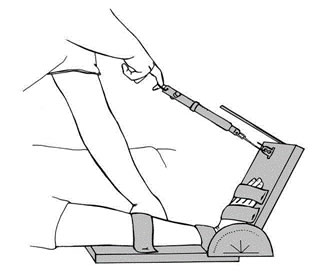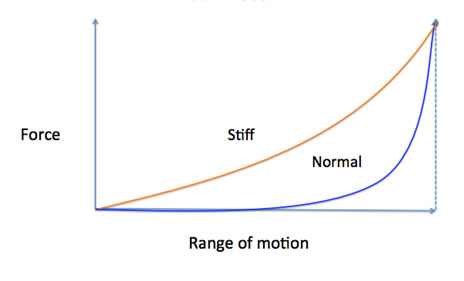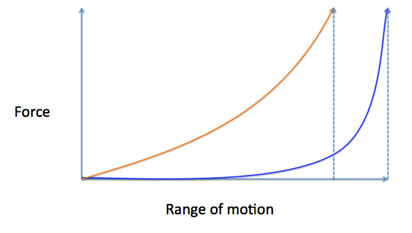Distinguishing between stiffness, contracture and spasticity
There are many secondary complications or adaptations which may (or may not) occur after stroke including. These can include neural (eg hypertonicity) and non-neural adaptations (eg stiffness, contracture, excessive muscle activity associated with compensatory strategies and early skill acquisition). Because of the lack of agreement about what spasticity actually is, often these secondary complications are assumed to be, or are described, as spasticity.
Let’s have a look at each of these in turn:
Stiffness:
Definition: “is the extent to which an object resists deformation in response to an applied force” (Wikipedia).
We can measure stiffness of muscles. Here is an example of a strategy to measure the extension range of motion of the wrist and fingers (Lannin 2007) Fig. 1. This strategy can also be used to measure the stiffness of the wrist and finger flexors by applying gradually increasing force using the spring balance and recording the range of motion at each force point. (Harvey 1994). A stiff muscle will require greater force to achieve a specific length when compared to a muscle that is not stiff (Fig. 2). Note that in this example the final range of motion is the same.
Contracture:
The same strategy can be used to measure range of motion and determine whether a contracture is present. The difference between contracture and stiffness is that if there is contracture, there will be a loss of range of motion (ROM). Stiffness and contracture may be present at the same time (see Fig. 3)
So it is possible to distinguish between stiffness and contracture. If we use the original definition attributed to Lance (see Spasticity blog 2) we can also distinguish between spasticity, stiffness and contracture. Using the Pandyan definition of spasticity this distinction between these possible sequelae after stroke is not possible.
References:
Lannin N, Cusick A, McCluskey A & Herbert R (2007) Effects of splinting on wrist contracture following stroke: A randomized controlled trial. Stroke. 38, 11-116.
Harvey L, King M & Herbert R (1994). Test-retest reliability of a procedure for measuring extensibility of the extrinsic finger flexor muscles. Journal of hand Therapy. 7(4), 251-254.




Leave A Comment